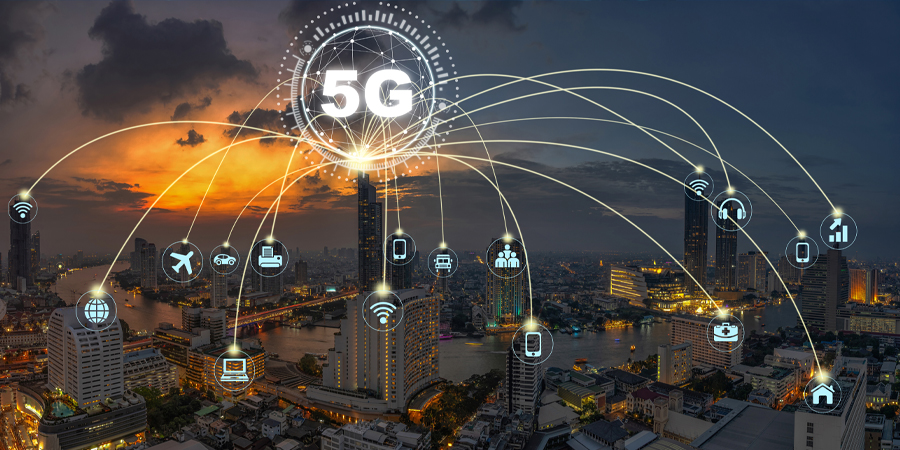The ICT industry has come a long way in enabling today’s digital-first economy since the early advancements in 2G, 3G and 4G mobile internet connectivity. Now, with the rapid deployment and adoption of 5G technology, the digital economy holds tremendous potential for all sectors and industries and endless possibilities for new revenue and economic growth. However, to derive genuine value from this potential, carriers must focus on constant innovation and collaboration to meet the increasing digital requirements in both the consumer and industrial markets.
Building on Huawei’s deep expertise in 5G advancement, Li Peng, Huawei's Corporate Senior Vice President and Carrier BG President, delivered a keynote titled “Creating New Value with 5G to Unleash Digital Dividends” at MWC Shanghai 2023 on June 29.
In his speech, Li Peng underscored the clear advantage of the early 5G adopters in the carrier market, noting that the Average Revenue Per User (ARPU) for the top 20 carriers ranked by the number of 5G sites had increased by 10% in recent times. He said that in addition to spearheading development in the digital industry, 5G is also enabling the digitalization of all industries.
"In the future, the new business scenarios for people, homes, businesses and vehicles will deliver new experiences. This will raise higher requirements for network capabilities. Enhanced network capabilities, like 10 Gbps downlink, 1 Gbps uplink and 100 billion IoT connections, will create a vast market space in 5.5G for carriers," Li explained.
5G has seen large-scale application around the world in over 17,000 private line projects serving multiple sectors like manufacturing, port, mining, oil & gas and healthcare, delivering significant economic benefits throughout society. Moreover, industrial digitalization is positioned as the driver for a digital, intelligent economy. Li highlighted the role of data in promoting the integration of the digital economy with the real economy and emphasized the need for good data governance to allow the effective flow of data through production activities as well as convergence with applications.
In order to create new value with 5G and leverage the digital dividends, Li put forward the following considerations for telecommunication carriers:
Demand for New Experiences
5G delivers higher traffic, extensive connectivity, more reliable latency, ubiquitous cloud services and intelligent applications. Li cited the example of the growing live-streaming industry and the active increase in IoT investments by various companies. He said that 5G spectrum resources will play a big role in upgrading the network as the boom in innovative forms of content and applications is expected to further drive explosive traffic growth. Li reiterated that Huawei’s field test in the 6 GHz band's technological capabilities showed that a 10 Gbps downlink can be achieved on the 6 GHz bands with the help of extremely large aperture arrays (ELAA) and that the band can also achieve co-coverage with C-band for a single site.
He also highlighted the rise in consumer demand for better experiences in home scenarios and said that services like naked-eye 3D, smart home management and whole-house intelligence are rapidly maturing, representing a significant leap forward for audiovisual services.
Innovation in FWA and FTTR
To help carriers better meet home users' needs in various scenarios, Huawei has launched verified 5G FWA (fixed wireless access) Square solutions: FWA Pro for ultrafast connectivity, FWA Lite for cost-effective connectivity and FWA Biz for the highly reliable connectivity required in industrial scenarios. In the optical broadband market, Li said Huawei is collaborating with carriers to explore FTTR (Fiber to the Room) innovation to help carriers provide gigabit Wi-Fi connections for innovative business models.
Tapping into the Trillion-Dollar B2B market with 5.5G
In addition to meeting the needs of individual users and homes, 5G also creates huge value for the digital transformation of the industry market. Li highlighted the capacity of the 5.5G network, which uses dual-fed and selective receiving as well as deterministic uplink and downlink scheduling. These and other innovative technologies help to deliver connectivity with deterministic latency of less than 10 milliseconds and five nines or even six nines reliability for a high-concurrency environment.
Realizing the growth of IoT applications in industrial settings, Li said that there will soon be over 100 billion IoT connections around the world, making three major technologies vital: RedCap, NB-IoT and Passive IoT. Together with carriers and partners, Huawei has verified RedCap's ability to provide guaranteed SLA, capacity and experience in various domains, from power grids and manufacturing to energy.
Rise of Autonomous Vehicles
Li also touched on the demand for intelligent connected vehicles, which is generating a favorable market for carriers, with Level-4 autonomous vehicles expected to hit the commercial market in 2025. Li said that by combining communications and sensing, 5.5G is expected to bring V2X to a new level, enabling intelligent transportation and enhancing driving safety, whereby carriers can offer intelligent transportation services and network as a service (NaaS).
Considering the above opportunities for monetizing 5G, Li urged all stakeholders from across the industry to work together to drive further innovation and industry development.
“Huawei is ready to work with carriers and partners to develop innovative 5.5G technologies, verify them in real-world scenarios and use them to meet the digitalization needs of consumers and industries alike. So, let's create new value with 5G to unleash digital dividends,” Li concluded.
By Jonathan Pradhan, senior journalist, Telecom Review





